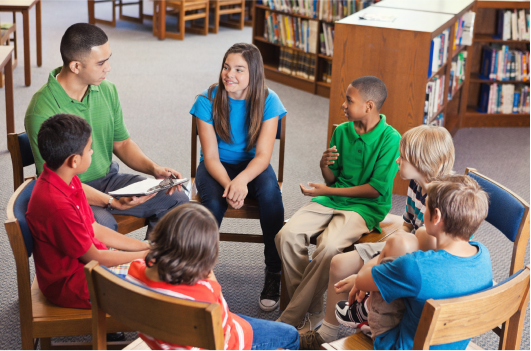Let’s explore how we can reflect on our own experiences and approach conversations about culture in a way that fosters connections in your classroom.
What is culture?
Culture is a lived experience unique to each individual. It can include values, traditions, communication styles, food, language, learning styles, social norms, and more.1 The way we reflect on our own experiences and approach conversations about culture with students can help to foster connections.
Why create a culturally responsive classroom?
A culturally responsive classroom creates an environment where students can feel comfortable, secure, and respected.
Nurturing a culturally responsive classroom can help students to feel they have a voice and that they are listened to. When we celebrate the cultural knowledge, prior experiences, and strengths of our diverse students, learning is often more engaging and effective.1
| A culturally responsive classroom… | What might this look like? |
| Treats students with compassion, dignity, and respect. |
Welcoming multiple viewpoints and encouraging others to make decisions that align with their own values, needs, and resources.
|
| Meets diverse learning needs with various approaches to instruction.1 |
Providing students with choice in how they want to learn – individually, in pairs, in small groups, or as a class.
|
| Considers each student’s cultural experiences with food and how these experiences influence their beliefs, values, and preferences. |
Inviting students to explore their personal, family, and community food stories – let students choose whether they would like to share.
|
| Invites students to share their experiences through storytelling. |
Creating opportunities for students to share – for example, starting a discussion with a sharing circle that allows voices to be heard respectfully.
|
How can I create a culturally responsive classroom?
The table on the right provides examples of ways you can create a culturally responsive classroom.
Does a culturally responsive classroom mean all students will share?
Many Teach Nutrition programs and resources invite students to share information and thoughts about their culture and food traditions. These may be something that students are excited to share with others or they may be private experiences that they would prefer to keep to themselves. As you facilitate conversations about food and culture with your students, consider the different perspectives and experiences of each student. Not all experiences are positive. By allowing students to decide whether they would like to share or just observe, we can continue to respect each student’s experiences and learning needs.
Acknowledgements
We would like to extend a sincere thank you to Sara Cook, a cultural ecologist and community researcher and the Executive Director of Prairie Fish Consulting, for her support and guidance in developing this article and our approach to culturally inclusive resources.
Source
- Gay G. Preparing for culturally responsive teaching. J Teacher Educ 2002;53:106-116.



